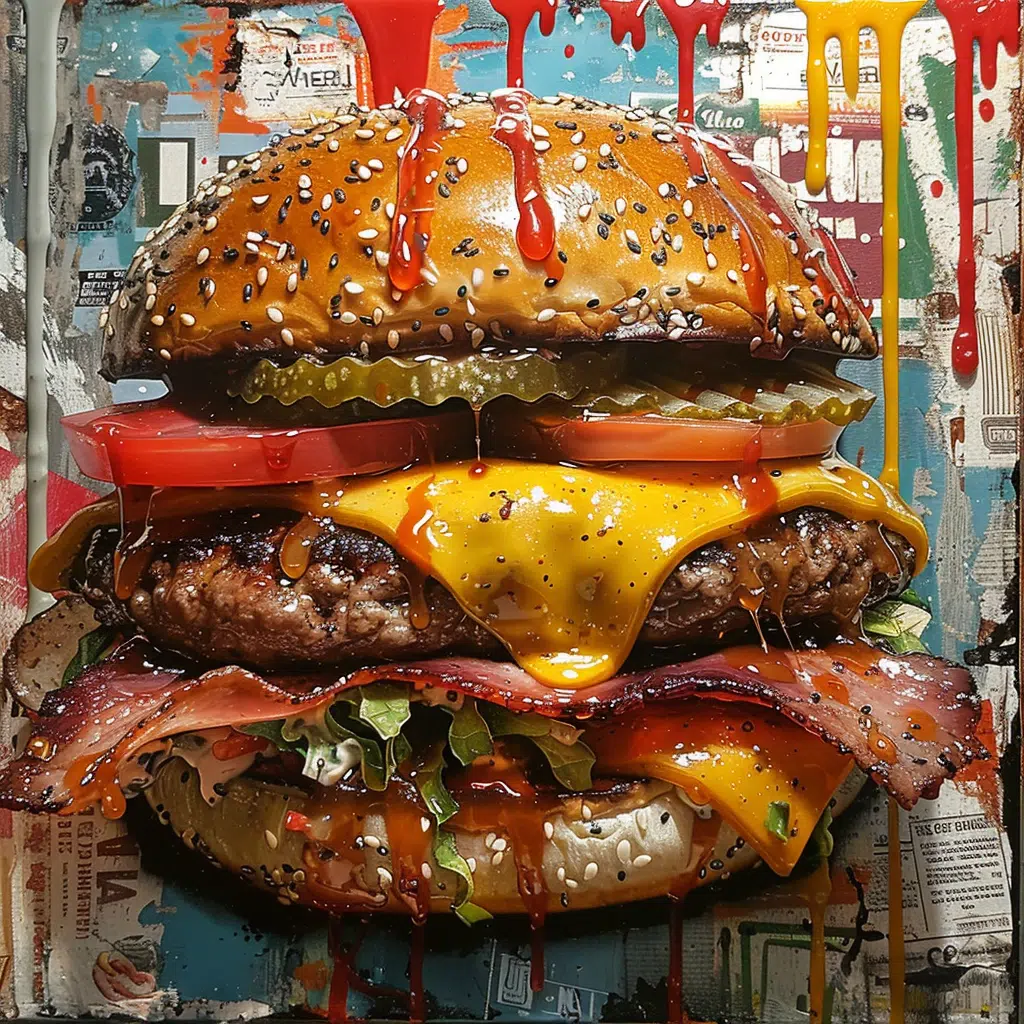The Matrix (1999)
The original Matrix film follows Keanu Reeves, who plays a computer hacker named Thomas “Neo” Anderson. Neo begins to notice some things are not as they seem in his world, when suddenly he is picked up by mysterious agents who demand that Neo lead them to the location of a terrorist known as Morpheus (Laurence Fishburne). However, Morpheus breaks Neo out and offers him a choice: Take the blue pill and wake up in your bed tomorrow thinking this was all a dream, or take the red pill and learn the truth.
Optional: The Animatrix (2003)
The Animatrix is an animated movie – or, rather, a collection – of nine shorts (four of which were written by the Wachowskis) that tell different stories set in The Matrix Universe. It was originally released between the second and third Matrix feature films.
The nine different stories take place at different points in The Matrix Universe, making it difficult to place in our timeline. The reason we’ve placed them here is that the first short in the Animatrix serves as a direct prequel to the events of The Matrix Reloaded, the next film on our list. The other shorts might not fit in perfectly with the timeline here, but it’s easier for first-time viewers to understand the Universe with background knowledge of the first Matrix film.
For instance, there are shorts that feature Keanu Reeves’ Neo and two others that show the war between man and machine that eventually destroys Earth. Both are fun watches but are improved by knowing some of the source material.
The Matrix Reloaded (2003)
Two sequels to the original Matrix film were released to close out the original trilogy, and they both premiered in 2003.
Reloaded debuted in May 2003 and picks up six months after the events of the first film. It revolves around the machines’ attempt to destroy Zion, the last human city. Meanwhile, the bad guy from the first film, Agent Smith (Hugo Weaving), is not only still alive but has undergone major changes following his confrontation with Neo in The Matrix.
The Matrix Revolutions (2003)
The original Matrix trilogy concluded with The Matrix Revolutions, which released in December 2003. It’s written and directed by The Wachowskis – just like the other two films.
It picks up immediately following the events of Reloaded. Agent Smith, who had his connection to the Matrix severed by Neo, has become even more powerful and found his way into the real world by assimilating the body of Bane (Ian Bliss). Neo, meanwhile, has been trapped in the Matrix’s version of purgatory, which leads to Trinity and Morpheus attempting to free him.
Matrix Resurrections (2021)
If you’ve made it this far on your rewatch, you now know that the end of The Matrix Revolutions sees (SPOILER ALERT) the two main heroes of the franchise both dead. Neo and Trinity sacrificed themselves to help ensure freedom for humanity and to end the war between man and machine.
Well, Resurrections sees those deaths looking more than a little exaggerated, with Keanu Reeves and Carrie-Ann Moss returning to their parts.
In addition to the two stars, Jada Pinkett Smith reprises her role as Niobe from the original films, and Neil Patrick Harris, Jonathan Groff, and Priyanka Chopra are among those joining the series as new characters.
It’s a whirlwind of a movie that really upends what you know about the Matrix itself, and is a great treat for returning fans.






















60 Responses
I’m often to blogging and i really appreciate your content. The article has actually peaks my interest. I’m going to bookmark your web site and maintain checking for brand spanking new information.
Kocaeli reklam ajansı Gebze reklam ajansı İzmit reklam ajansı web tasarım kurumsal kimlik tasarımı marka kimliği logo tasarım katalog tasarım fotoğraf çekimi drone çekimi
Yes! Finally something about company logo nitro golf balls.
Thanks in support of sharing such a fastidious thought, article is nice, thats why i have read it fully
Highly energetic blog, I enjoyed that bit. Will there be a
part 2?
great issues altogether, you simply received a brand
new reader. What might you suggest about your post that you made some days in the past?
Any positive?
Everyone loves what you guys are usually up too. Such clever work and exposure!
Keep up the excellent works guys I’ve incorporated you guys to my own blogroll.
Hey would you mind letting me know which webhost you’re
utilizing? I’ve loaded your blog in 3 different browsers and I must say this blog
loads a lot quicker then most. Can you suggest a good internet hosting
provider at a fair price? Cheers, I appreciate it!
What’s up, after reading this awesome post i am as well cheerful to share my experience here with colleagues.
Hi there, yeah this piece of writing is in fact fastidious and I have learned lot of things from it
on the topic of blogging. thanks.
Thank you for the good writeup. It in fact was a amusement account it.
Look advanced to more added agreeable from you!
However, how could we communicate?
Excellent web site you’ve got here.. It’s difficult to find excellent writing like
yours nowadays. I seriously appreciate people like you!
Take care!!
Hi mates, its wonderful paragraph on the topic of teachingand completely explained, keep it up all
the time.
This blog post provided a fresh perspective on [topic]. I appreciate the way you delved into the nuances and presented practical solutions. Well done!
Hello exceptional blog! Does running a blog like this require a lot of work?
I’ve very little understanding of coding but I was hoping to start
my own blog in the near future. Anyways, should you have any
recommendations or techniques for new blog owners please
share. I understand this is off topic however I simply wanted
to ask. Thanks!
Hi to all, it’s truly a good for me to pay a quick visit this website, it includes priceless Information.
Howdy! Do you know if they make any plugins to assist with Search
Engine Optimization? I’m trying to get my blog to rank for some targeted keywords but I’m not seeing
very good results. If you know of any please share.
Many thanks!
I used to be recommended this blog by means of my cousin. I am no longer sure
whether this post is written by way of him as nobody else recognize
such detailed about my difficulty. You are incredible! Thanks!
[url=[Link deleted]горячего цинкования металлоконструкции[/url]
MERTYHR692047MAVNGHJTH
I think this is among the most significant info for me. And i’m glad reading
your article. But should remark on some general things, The site style is
wonderful, the articles is really great : D. Good job, cheers
Very nice post. I certainly love this site. Keep writing!
I am regular reader, how are you everybody?
This piece of writing posted at this web page is in fact pleasant.
whoah this blog is excellent i like reading your articles.
Stay up the great work! You already know, lots of individuals are searching
round for this information, you could help them greatly.
Tremendous things here. I am very glad to look your article.
Thanks so much and I am taking a look forward to contact you.
Will you kindly drop me a e-mail?
Thanks for a marvelous posting! I seriously enjoyed reading it, you happen to be a great author.I will make
certain to bookmark your blog and will come back from now on. I want to encourage you continue your great posts,
have a nice holiday weekend!
At this time it appears like BlogEngine is the top blogging platform available right
now. (from what I’ve read) Is that what you’re using on your blog?
We stumbled over here coming from a different page and thought
I might as well check things out. I like what I see so now i’m following you.
Look forward to exploring your web page repeatedly.
Hey! Do you know if they make any plugins to assist with SEO?
I’m trying to get my blog to rank for some targeted keywords but I’m not seeing very good gains.
If you know of any please share. Thanks!
Great article! This is the type of info that should be shared around the net.
Disgrace on Google for no longer positioning this put up upper!
Come on over and seek advice from my website .
Thanks =)
Wow, amazing blog layout! How long have you been blogging for?
you made blogging look easy. The overall look of
your web site is fantastic, let alone the content!
Link exchange is nothing else however it is only placing the other person’s weblog link on your page at properplace and other person will also do similar in support of you.my website – [Link deleted]
Excellent blog! Do you have any hints for aspiring writers?
I’m hoping to start my own website soon but I’m a little lost on everything.
Would you propose starting with a free platform like Wordpress or go for a
paid option? There are so many choices out there that I’m completely confused ..
Any suggestions? Kudos!
I don’t know whether it’s just me or if perhaps everyone else
encountering issues with your site. It appears as though some of the text in your
posts are running off the screen. Can somebody else please comment and let me know if this
is happening to them as well? This may be a issue with my browser because I’ve
had this happen before. Thanks
I think that everything published was very logical. But, what about this?
suppose you wrote a catchier post title? I am not saying your information isn’t good., however what if you added a headline to maybe grab a person’s attention? I mean How to watch Matrix Movies in Order
– Reactor Magazine: Motivation, AI, Robots, Movies, Tech, Business, News is a little
boring. You should glance at Yahoo’s home page and
see how they create news headlines to get people interested.
You might add a video or a pic or two to get readers excited
about everything’ve written. In my opinion, it could make
your posts a little livelier.
Hi would you mind letting me know which webhost you’re utilizing?
I’ve loaded your blog in 3 completely different browsers and I must say this blog loads a lot quicker then most.
Can you recommend a good hosting provider at a honest price?
Many thanks, I appreciate it!
excellent post, very informative. I ponder why the other specialists of
this sector do not understand this. You should
proceed your writing. I’m sure, you have a great readers’ base
already!
Can I simply say what a comfort to find a person that actually knows what they are discussing
on the internet. You certainly understand how to bring a
problem to light and make it important.
More people should check this out and understand this side of your story.
I was surprised that you aren’t more popular because you certainly possess the gift.
Hi there would you mind letting me know which hosting company
you’re using? I’ve loaded your blog in 3 different browsers and
I must say this blog loads a lot quicker then most.
Can you suggest a good internet hosting provider at a reasonable price?
Thanks a lot, I appreciate it!
Does your website have a contact page? I’m having
trouble locating it but, I’d like to send you an e-mail.
I’ve got some ideas for your blog you might be interested in hearing.
Either way, great site and I look forward to seeing
it expand over time.
I could not resist commenting. Very well written!
Hi there Dear, are you in fact visiting this web site on a regular basis, if so
then you will definitely get pleasant knowledge.
Good post but I was wanting to know if you could write a litte more on this topic?
I’d be very thankful if you could elaborate
a little bit more. Kudos!
Heya i’m for the first time here. I found this board and
I find It really useful & it helped me out a lot.
I hope to give something back and aid others like you aided me.
Thanks for writing such a very good article, keep it up and look forward to more great posts. And visit our blog site also <a href="[Link deleted]king
best site for <a title="satta king record chart" href="[Link deleted]king ghaziabad result, leak number all game record charts. We provide 100% fix number
best site for satta king result, leak number all game record charts. We provide 100% fix number.
best site for <a title="satta king record chart" href="[Link deleted]king result, leak number all game record charts. We provide 100% fix number direct from <a href="[Link deleted]king gali company which includes all famous games like <a href="[Link deleted]king Desawar, Gali Satta, Ghaziabad, Faridabad, Shri Ganesh Satta, Taj Satta King, charminar and other games of Satta Market Matka is also a simple game and essentially is a form of old lottery games. Ratan Khatri was the founder of this game in the 70 century and was become popular up until the 90 century. The game is not played that much anymore mostly in the regions of North India and Pakistan. Instead, many enjoy the lottery games <a title="satta king record chart" href="[Link deleted]king result more so these days.
Thanks for writing such a very good article, keep it up and look forward to more great posts. And visit our blog site also <a href="Here is an example card. satta-king.online is the no1 satta king site where you can get the fastest Satta result, <a href="[Link deleted]king leak number (confirm jodi), Old <a href="[Link deleted]King ghaziabad, Daily leak Jodi, Desawar Jodi, <a href="[Link deleted]king faridabad, Satta record chart, <a href="[Link deleted]Bazar Satta king, Gali Satta result, Ghaziabad Satta Result, Satta Bazar result and 100% passing fix Jodi today.[Link deleted]king
Content you post about <a href="[Link deleted]king gives me lot of information which I need to make profit. I like the tips you share in your recent post that earning money is connected with close attention. You’ve to keep positive when you want make profit.
Very nice work, I am beginner and looking for quality guidelines to increase my guessing <a href="[Link deleted]king office number skills in Satta King and I learned so much from your last article you write. You clearly mentioned needs practice to become successful and I’ll do it from today and make myself successful like you.
It is true money is crucial life happy life with full of joy and there is no shortcut to become rich expect playing <a href="[Link deleted]king. it true if you’re doing with plan that is you share in your blog and I am totally agreed with your advice and recommend to read all.
I can explain my feelings in this comment section how much I enjoyed your content on <a href="[Link deleted]satta king especially the ideas you share on playing Satta King was amazing. Your articles provide me proper view of the betting and how I can become a better player in the Satta King.
I am not a regular commenter; I am just here after reading your recent article about <a href="[Link deleted]and money management. I never thought it could help me to win money; money management is so important that is what I learn from your recent article.
Thank you so much!!!
Before following your blog I thought I learned all about <a href="[Link deleted]satta king 786, but my friend recommend me to read the post from your blog, when I read just 2 posts and shocked to read the content and it blows mind and it teaches me lot of new things which I thought never exist.
Wow, just fantastic pieces of articles on <a href="[Link deleted]king online. Your recent post on how to analyze Satta Chart was the best I read come across. The main focus of article is how we can analyze Satta Chart to make profit. I like the way you explain how we can analyze to pick Satta Number.
Big Thumbs up to you!!!
Thanks for this matrix movie review. Excellant !
For earning online money download the app: [Link deleted]
The results of Delhi satta king games Satta king result are closely followed by a large number
of people, creating a sense of community and excitement.
The game’s unpredictability and thrill make it a popular choice among those seeking an adrenaline rush
[Link deleted]
Ease Dental is your premier destination for comprehensive Best Braces in Greater Noida. Our experienced team of dentists offers a wide range of treatments, including preventive care, restorative dentistry, cosmetic procedures, and more. Whether you need a routine dental check-up or advanced dental treatment, we are here to meet your needs with compassion and expertise. At Ease Dental, we prioritize patient satisfaction and ensure that you receive personalized care tailored to your unique dental needs. Trust Ease Dental for all your dental needs in Ghaziabad and experience the difference in quality dental care.